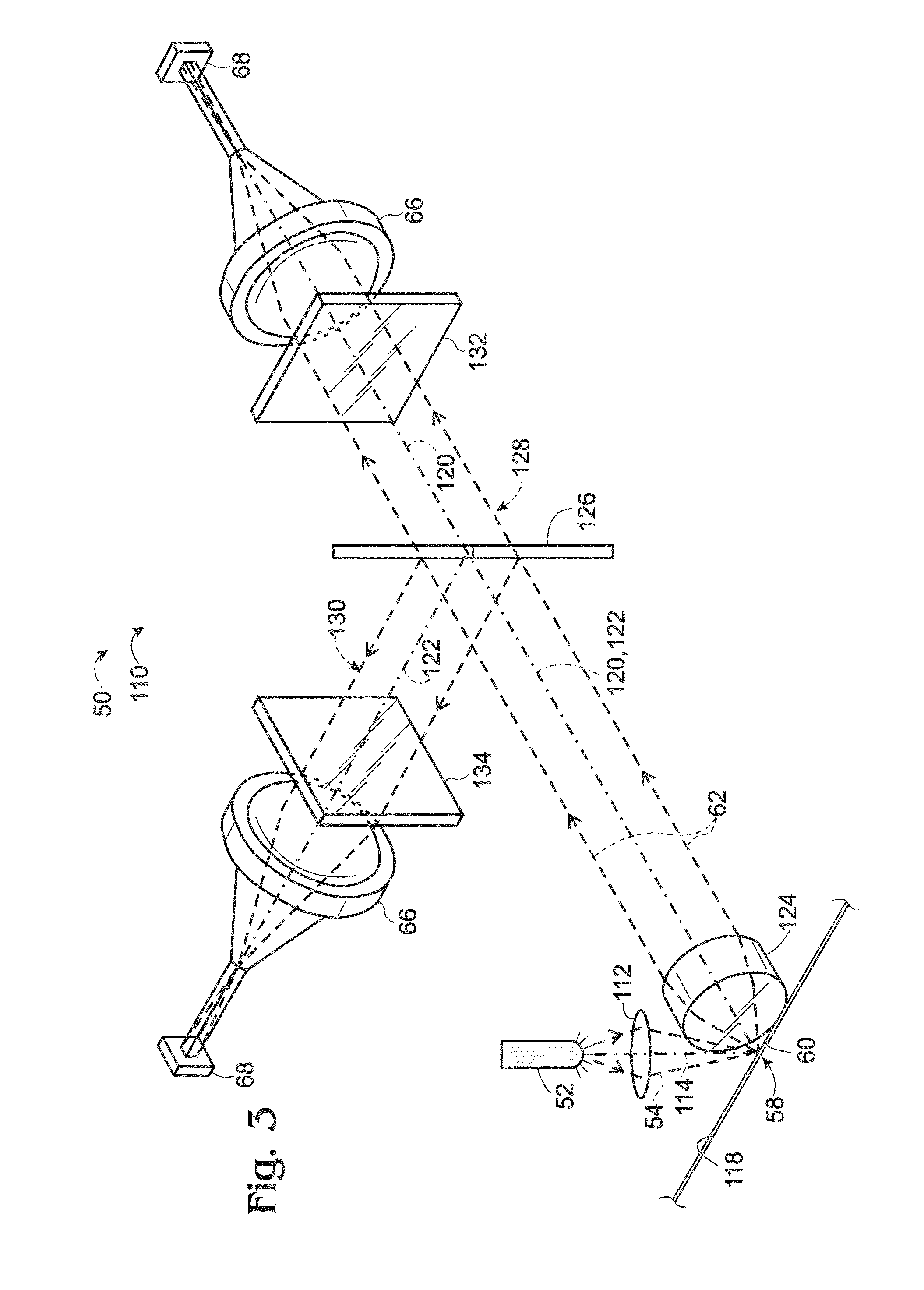Detection system with one-piece optical element to concentrate and homogenize light
- Summary
- Abstract
- Description
- Claims
- Application Information
AI Technical Summary
Benefits of technology
Problems solved by technology
Method used
Image
Examples
Embodiment Construction
[0022]The present disclosure provides a detection system comprising an examination region, a one-piece optical element including a focusing portion to concentrate light received from the examination region and a guiding portion to homogenize light received from the focusing portion, and a detector configured to detect homogenized light received from the guiding portion.
[0023]The optical element, interchangeably termed a concentrator, may collect incident light from a relatively large area and direct it towards a light sensor with a comparatively small active area. The optical element may comprise a refractive focusing portion and a light guiding portion in one integral unit. The optical element may be a non-imaging optical device that delivers light from a relatively large input aperture (e.g., a round input aperture) to a relatively small output aperture (e.g., a rectangular output aperture), while homogenizing the intensity distribution of the light across the output aperture.
[002...
PUM
| Property | Measurement | Unit |
|---|---|---|
| size | aaaaa | aaaaa |
| size | aaaaa | aaaaa |
| size | aaaaa | aaaaa |
Abstract
Description
Claims
Application Information
 Login to View More
Login to View More - R&D
- Intellectual Property
- Life Sciences
- Materials
- Tech Scout
- Unparalleled Data Quality
- Higher Quality Content
- 60% Fewer Hallucinations
Browse by: Latest US Patents, China's latest patents, Technical Efficacy Thesaurus, Application Domain, Technology Topic, Popular Technical Reports.
© 2025 PatSnap. All rights reserved.Legal|Privacy policy|Modern Slavery Act Transparency Statement|Sitemap|About US| Contact US: help@patsnap.com



